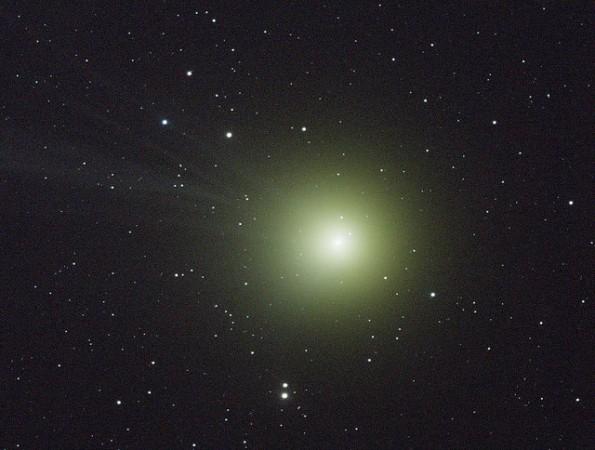
Skywatchers in California will be able to observe two celestial bodies in the next few days, with just a pair of binoculars.
Once disappeared, Comet Lovejoy - which is still visible in the night sky as a fuzzy green patch of light - will not be seen again from Earth for the next 8,000 years. The comet is located right of Orion and between constellations of Perseus and Triangulum.
"Through the rest of January, Comet Lovejoy (C/2014 Q2) is expected to remain bright enough to be seen through ordinary binoculars in spite of the glow of city lights. It is also visible to the unaided eye from wilderness locations free from artificial lights," astronomers with the Griffith Observatory wrote, Tech Times reports.
The comet is also known as C/2014 Q2 and it was discovered in August 2014 by Australian astronomer Terry Lovejoy. It came closest to the Earth on 7 January (44 million miles) and it will come closest to the Sun on 1 February.
NASA scientists say that the comet is also visible with naked eye.
Comets are composed of water ice and frozen carbon dioxide, along with ammonia, methane, dust, and other components
Meanwhile, on Monday an asteroid – as wide as five football fields – will fly by Earth. Astronomer Edwin Krupp, director of the Griffith Observatory, said that spotting the asteroid will be a challenging task, but "comet Lovejoy is easy," The Los Angeles Times reports.
The most appropriate time to spot asteroid 2004 BL86 will be Monday night.
Scientists at Jet Propulsion Laboratory in La Cañada Flintridge will be tracking the asteroid. The celestial body will fly by Earth safely at a distance of about three times of that of the moon.
The asteroid, BL86, won't pass the Earth so close for at least another 200 years.














